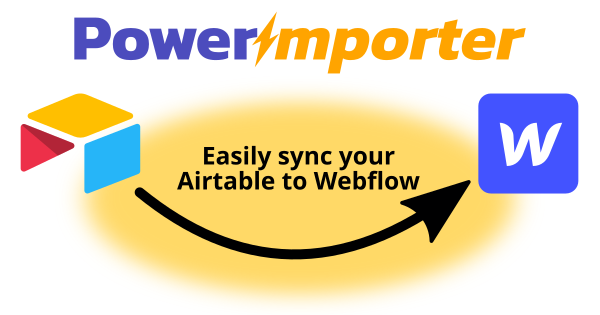Creating dynamic web pages in Webflow using Airtable data


In an era where personalized digital experiences are not just desired but expected, dynamic web pages have become a crucial element in web design. Unlike static pages, dynamic ones adapt in real-time to user interactions and preferences, offering a more engaging and responsive environment. This adaptability is key in an age where users seek content that resonates with their specific needs and interests.
However, creating and managing such dynamic pages can be challenging due to the complexities involved in syncing and organizing the data needed to power them. This is where the integration of Webflow and Airtable comes into play, offering an innovative solution to these challenges. Webflow's intuitive visual building tools and Airtable's versatile database capabilities combine to streamline the creation of dynamic web pages.
The Key Benefits of Marrying Webflow and Airtable for dynamic web pages

Efficiency and real-time data handling:
Automation incontent updating eliminates the tedious task of manual data entry. Changes in Airtable reflect immediately on your Webflow site, ensuring data accuracy and timeliness, which is crucial for pages that rely on high-velocity data.
Enhanced user experience through data-driven personalization:
Dynamic web pages, powered by real-time data, cater to individual user needs. This level of personalization, from displaying content based on user history to interactive elements like forms and polls, is made possible by the robust backend management of Airtable and the design versatility of Webflow.
Scalability and performance:
As your Airtable dataset expands, your Webflow site adjusts accordingly, ensuring your website grows seamlessly with your business. This scalability is vital for maintaining performance even as data and user interaction complexities increase.
Customization with complex data relationships:

Leveraging Webflow's design flexibility and Airtable's capability to handle complex data relationships, highly tailored webpages that align perfectly with specific business requirements can be created,balancing creative design with functional dynamism.
SEO advantages:
Regularly updated and relevant content, driven by fresh data from Airtable, enhances your SEO performance, making your site more visible and attractive to search engines.
Reduced maintenance and enhanced security:
With dynamic content integration, the need for manualupdates diminishes, and the focus can shift to strategy and design. Additionally, integrating Webflow and Airtable with attention to security anddata privacy ensures protection against breaches and compliance with regulations like GDPR.
How to achieve a seamless integration

Integrating Webflow and Airtable isn't without its challenges. Issues like human error, cybersecurity risks, and data synchronization delays can hinder the efficiency and security of your website. To address these challenges, PowerImporter emerges as a pivotal tool. It simplifies the process of transferring and synchronizing data between Airtable and Webflow, mitigating the risks associated with manual data handling and ensuring a smooth, seamless integration.
In conclusion, the combination of Webflow and Airtable facilitated by PowerImporter provides a robust solution for creating dynamic web pages that are not only efficient and scalable but also highly customized and SEO-friendly. This integration is essential for businesses looking to offer personalized, engaging online experiences that meet the evolving demands of today's web users.

